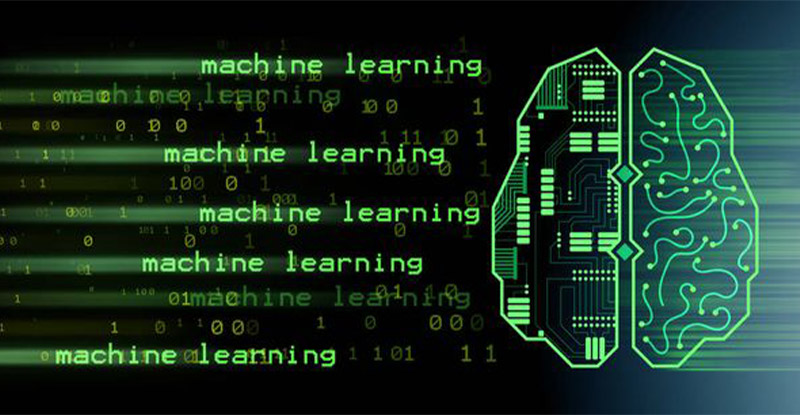In today’s world, the role of data in decision-making is paramount. The exponential growth in data has led to a technological revolution where machine learning has become an essential tool for businesses.
Machine learning algorithms have revolutionized how enterprises evaluate and interpret data, which have been instrumental in better decision-making processes. However, harnessing the full potential of machine learning requires an adequate knowledge of statistics.
In this blog post, we aim to explore the significance of statistics in machine learning and how it helps in building models that provide valuable insights.

Revolutionize your business processes with intelligent automation and let machine learning supercharge your data extraction and document processing. Experience the future today!
Origin of Statistics
Statistics have its basis in mathematics. As a mathematical discipline, statistics is all about studying and interpreting data. When it comes to machine learning, you need to know much about statistics, specifically probability and statistics. Probability theory is an essential aspect of machine learning, as it helps you understand how the events you measure are connected to one another.
Intelligent Process Automation Solution
Related Videos
Most Common Uses of Statistics in Machine Learning
Statistics plays a crucial role in various aspects of machine learning. Here are some of the most useful applications of statistics in the context of machine learning:
- Data Preprocessing and Exploration: Before applying machine learning algorithms, it’s essential to preprocess and explore the data. Statistics provides valuable techniques such as data normalization, feature scaling, handling missing values, and outlier detection, which help to improve data quality and prepare it for effective analysis.
- Descriptive Statistics: Descriptive statistics summarize and describe the main characteristics of a dataset, including measures of central tendency (mean, median, mode) and dispersion (variance, standard deviation). These statistics provide insights into the distribution and properties of the data, aiding in understanding and interpreting the results of machine learning models.
Boost Efficiency and Accuracy
Discover how machine learning in docAlpha’s intelligent process automation can transform your workflows. Streamline data extraction, eliminate manual errors, and drive unprecedented productivity gains.
Book a demo now
- Inferential Statistics: Inferential statistics enables conclusions or predictions about a population based on a sample. Machine learning can involve hypothesis testing, confidence intervals, and estimation techniques that assess the significance and reliability of model outcomes.
- Probability Theory: Probability theory is fundamental in machine learning. It provides a framework for reasoning about uncertainty and enables modelling and prediction. Probability distributions, such as the normal distribution, are used to model random variables, and techniques like Bayesian inference are employed for probabilistic modelling and decision-making.
- Model Evaluation and Validation: Statistics offers a range of evaluation metrics for assessing machine learning models’ performance and generalization ability. Metrics like accuracy, precision, recall, F1-score, and area under the ROC curve (AUC-ROC) are commonly used to measure classification model performance, while mean squared error (MSE), root mean squared error (RMSE), and R-squared are often used for regression model evaluation.
- Experimental Design and Hypothesis Testing: Statistics provides experimental design principles to ensure rigorous experimentation and unbiased results in machine learning. Techniques like A/B testing help evaluate the effectiveness of different models or algorithms, allowing for statistically valid comparisons and hypothesis testing.
- Feature Selection and Dimensionality Reduction: Statistics-based techniques, such as correlation analysis and feature importance measures, aid in identifying the most informative features for building accurate machine learning models. Dimensionality reduction methods like principal component analysis (PCA) and t-SNE employ statistical techniques to reduce the dimensionality of the data while preserving essential information.
- Statistical Learning Theory: Statistical learning theory forms the theoretical foundation of machine learning algorithms. It provides frameworks for understanding the generalization capabilities of models, assessing bias-variance trade-offs, and establishing bounds on model performance based on the available data.
These are just a few examples of how statistics contributes to machine learning. Understanding and utilizing statistical concepts and techniques are essential for effectively applying machine learning algorithms, interpreting results, and making informed decisions throughout the machine learning pipeline.
Statistics and Data Analysis in Machine Learning
Statistics and data analysis are integral components of machine learning. They provide the foundation for understanding and drawing meaningful insights from data. Here are some key aspects of statistics and data analysis in machine learning.
Statistics helps explore and understand the data through summary statistics, such as mean, median, and standard deviation, and visualizations like histograms, scatter plots, and box plots. These techniques aid in identifying patterns, outliers, and the overall distribution of the data.
Before applying machine learning algorithms, data preprocessing is often necessary. Statistics is vital in handling missing data, dealing with outliers, performing data normalization or standardization, and feature scaling. These techniques ensure that the data is in a suitable form for modelling.
In addition, statistical inference enables drawing conclusions from data. In machine learning, statistical inference involves hypothesis testing, confidence intervals, and p-values to assess the significance of relationships or differences between variables. It helps make informed decisions based on observed data and provides a measure of confidence in the results.
Statistics offers various evaluation metrics to assess the performance of machine learning models. Common metrics include accuracy, precision, recall, F1-score, and area under the receiver operating characteristic curve (AUC-ROC) for classification tasks. For regression tasks, metrics like mean squared error (MSE), root mean squared error (RMSE), and R-squared are commonly used. These metrics allow comparing different models and selecting the one best suits the problem.
Other statistics-based techniques assist in identifying relevant features and reducing the dimensionality of the data. Feature selection methods, such as correlation analysis and feature importance measures, help determine the most informative features for the target variable. Dimensionality reduction techniques like principal component analysis (PCA) and t-distributed stochastic neighbor embedding (t-SNE) reduce the number of dimensions while preserving important patterns or structures in the data.
One interesting application of statistics in machine learning is Bayesian inference. This statistical approach incorporates prior knowledge or beliefs about the data and updates them based on observed evidence. It is particularly useful in situations with limited data or uncertainty. Bayesian methods can be applied in various aspects of machine learning, such as parameter estimation, model selection, and decision-making.
By leveraging statistical concepts and techniques, machine learning practitioners can gain insights from data, develop accurate models, and make informed decisions based on the observed evidence. Statistics provides the tools and methodologies to ensure robust and reliable analysis throughout the machine learning process.
Stay Ahead of the Competition
Embrace cutting-edge machine learning technology in docAlpha’s intelligent process automation. Gain a competitive edge by automating document-driven processes and harnessing the power of AI for faster, smarter decision-making.
Book a demo now
Modeling in Machine Learning
Machine learning modeling involves creating an algorithm that can be used to make predictions in a given dataset. Machine learning models can be divided into two categories: classification and regression.
Classification machine learning models are used to predict categorical factors, while regression models help predict continuous values. Understanding statistics is vital in creating meaningful models that will provide accurate predictions.
Statistics and modeling are closely intertwined in the field of machine learning. Statistics provides the foundation for understanding and applying various modeling techniques. Here’s how statistics and modeling are interconnected in machine learning:
Model Selection and Evaluation
Statistics plays a critical role in model selection and evaluation. It helps determine the most suitable model for a given problem by assessing the trade-off between model complexity and performance. Statistical techniques like cross-validation, hypothesis testing, and information criteria (e.g., AIC, BIC) aid in comparing and selecting the best model among alternatives.
Parameter Estimation
Statistics enables estimating the parameters of machine learning models. By employing statistical methods such as maximum likelihood estimation (MLE) or Bayesian estimation, model parameters can be estimated from the available data. These estimates help define the characteristics of the model and improve its predictive performance.
Assumptions and Validation
Statistics helps in understanding the assumptions underlying machine learning models. Various modeling techniques have specific assumptions regarding data distribution, linearity, independence, and more. Statistical tests and diagnostic tools allow verifying these assumptions and assessing their impact on model validity.
Feature Engineering
Statistics is employed in feature engineering, which involves selecting, transforming, and creating new features from the existing data. Statistical techniques like correlation analysis, information gain, and chi-square tests aid in identifying relevant features that contribute most to the model’s predictive power.
Regularization and Overfitting
Statistics helps address overfitting, a common challenge in machine learning where a model performs well on training data but poorly on unseen data. Regularization techniques, such as ridge regression and Lasso, employ statistical methods to introduce constraints on model parameters and prevent overfitting.
Probability and Uncertainty
Probability theory, a branch of statistics, is fundamental in modeling uncertainty and making probabilistic predictions in machine learning. Bayesian inference and probabilistic graphical models allow for incorporating prior knowledge and updating beliefs based on observed data, enabling more robust and interpretable modeling.
Time Series Analysis
Time series modeling, a specific statistics domain, is extensively used in machine learning applications involving sequential or temporal data. Techniques like autoregressive integrated moving average (ARIMA), exponential smoothing, and state space models are employed to model and forecast time-dependent patterns.
Ensemble Methods
Ensemble methods combine multiple machine learning models to achieve better performance. Statistical techniques, such as bagging, boosting, and stacking, are utilized to construct ensembles that effectively aggregate individual models’ predictions effectively, reducing bias and variance.
In summary, statistics forms the basis for various modeling techniques in machine learning. It helps with model selection, parameter estimation, feature engineering, addressing assumptions, handling uncertainty, and evaluating model performance.
Machine learning practitioners can develop robust and accurate models that generalize well to unseen data by leveraging statistical principles.
Unlock Actionable Insights
Leverage the potential of machine learning in docAlpha to unlock valuable insights hidden within your documents. Empower your business with data-driven decision-making and unlock new
opportunities for growth.
Book a demo now
Evaluating Results in Machine Learning
Understanding the theory behind the statistical analysis helps to evaluate the results accurately. The accuracy of the results is critical as this is used to make business decisions. Evaluating the results requires you to use the right data analysis methods, such as hypothesis testing, confidence intervals, and significance testing.
Identifying Bias in Data
Machine learning models can experience bias when analyzing data. This is a significant problem and is, therefore, essential to mitigate. Statistics in machine learning helps identify and remove bias in models that could lead to inaccurate results. With statistics, it can be easier to identify patterns where bias has happened and create more accurate models.
The Role of Statistics in docAlpha Intelligent Process Automation
Statistics is integral to the functioning of Artsyl docAlpha’s intelligent process automation and machine learning technology. Artsyl docAlpha leverages machine-learning technology for document processing and data extraction. Statistics plays a crucial role in several aspects of docAlpha’s machine-learning capabilities.
It influences various stages of the machine learning pipeline, including data preparation, feature engineering, model training, evaluation, confidence estimation, and continuous learning. By leveraging statistical principles, DocAlpha can deliver accurate and efficient document processing and data extraction capabilities.
Supercharge Your Document Processing
Harness the unparalleled speed and accuracy of machine learning in docAlpha’s intelligent process automation. Process documents faster, reduce manual effort, and free up valuable resources
for strategic initiatives.
Book a demo now
Final Thoughts: The Role of Statistics in Machine Learning
Statistics plays a significant role in machine learning. Understanding statistics enables you to interpret data accurately, build meaningful models, evaluate the results effectively, and mitigate potential outcomes of bias in machine learning.
In summary, if you aim to take advantage of machine learning’s full potential, you must learn the fundamentals of statistics. This knowledge will guarantee accurate data predictions and provide valuable insights that help your business boost its decisiveness and profitability.




 Making the Most of Machine Learning and IPA
Making the Most of Machine Learning and IPA How Machine Learning is Changing the Way the Back Office Works
How Machine Learning is Changing the Way the Back Office Works AI, Machine Learning and the Future of the Back Office
AI, Machine Learning and the Future of the Back Office A Comprehensive Guide to Deep Learning vs. Machine Learning
A Comprehensive Guide to Deep Learning vs. Machine Learning The Rise of Machine Learning in Business
The Rise of Machine Learning in Business A Comprehensive Guide to Accuracy in Machine Learning
A Comprehensive Guide to Accuracy in Machine Learning